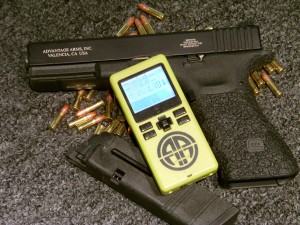Conceptually, I love dry fire. It allows you to fine tune your shooting skills in a relatively low stress environment, which means that it’s easier to access and understand what you’re doing right and what you’re doing wrong. I’ve put a ton of dry fire time in recently helping me get my reloads down to around 3.00 seconds from concealment for IDPA. It is by far the most cost effective way to hone basic skills like drawing and reloading.
It’s also incredibly, catastrophically boring. I actually had much the same problem when I did competed in taekwondo back when I was in high school. I was always down to work the heavy bag, or even better actually spar with someone. Anything with contact, with action was fun. Practicing forms? Not fun at all. The result of that in high school was that I barely squeaked past the “forms” part of my black belt test, but rocked the sparring and contact portions. I’ve known for a long time that route practice generally bores me.
To avoid that boredom when I’m practicing shooting, I’ll frequently use a .22LR analog of my main competition gun. Pictured is an Advantage Arms .22 kit, and after IDPA Nationals when I switch to Limited/ESP I’ll be dropping a Tactical Solutions .22 upper on my Glock 35. If you’re going to use rimfire as a substitute/compliment to dry fire training, make sure that you’re using a gun that is an analog of your main competition gun. If you’re an M&P shooter, the new M&P22 would be a solid purchase, for example. Glock shooters are left with buying a conversion kit for their guns.
To my mind, rimfire training has a few advantages over dry fire training…if you have a mindset like mine. I’m motivated by observable results – so a 2 hour dry fire session where I shave 0.3 seconds off my average reload isn’t really observable enough, because while the timer may say I’m faster there’s no real sense of accomplishment to it. It’s like working out: if I go to the gym to work out and I don’t end up sweating, the internal sense of accomplishment isn’t there. On the flip side, if I go to the range and have a 2 hour practice session shooting nothing but rimfire, I can finish the session, look around and see that I’m standing in a small pile of rimfire brass and for whatever reason feel like I’ve accomplished something more meaningful than if I’d just spent 2 hours dry firing. If that’s the motivation you need to practice, then look into getting a rimfire trainer.
However, basically every benefit that you can get from a rimfire trainer you can get from an airsoft pistol as well. Assuming it’s a realistic enough pistol that it will accurately simulate the manual of arms on your competition gun, you can also get all your basic gun handling practice done with an airsoft gun. Airsoft is a good enough analog to actual guns that Japanese airsoft shooters come over to the States for Steel Challenge and are quite competitive, despite not having access to “real” guns in their home country.
So if you have the attention span of a fourth grader (like me) and are looking for a more entertaining alternative to dry fire practice, considering getting a .22 trainer for your main gun, or look into an airsoft pistol. One note of caution regarding airsoft practice: if you set it up in your backyard and have neighbors, there is a non-zero chance that you will get to meet an officer from your local PD. This generally depends on whether or not your neighbors can 1) see into your yard, and 2) are dicks.

No comments:
Post a Comment